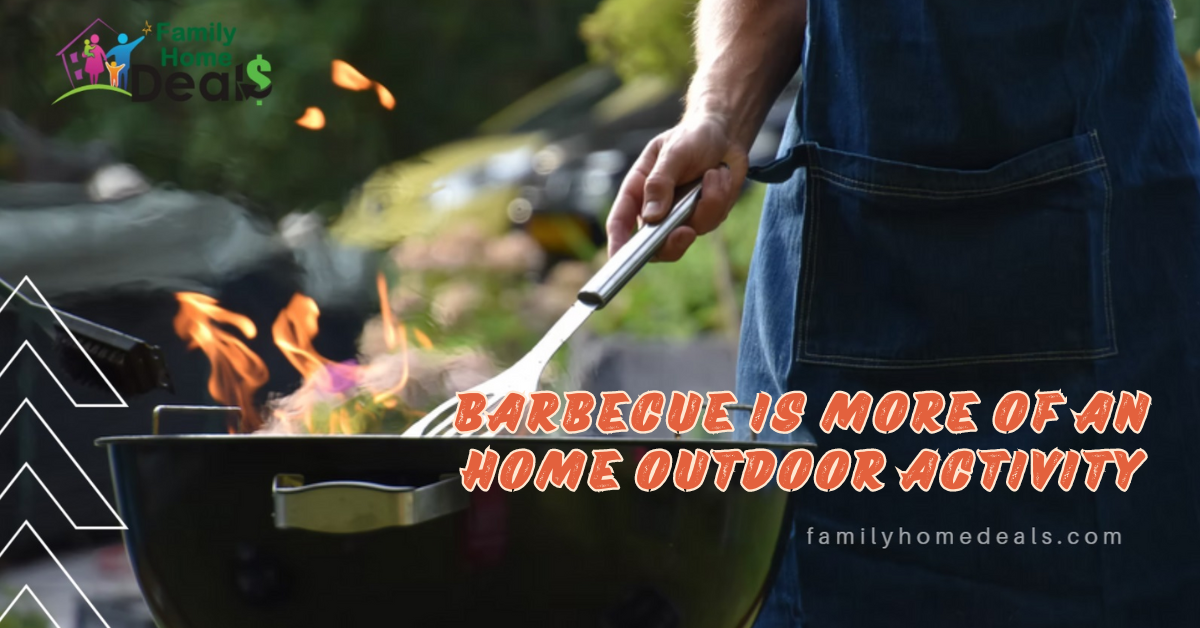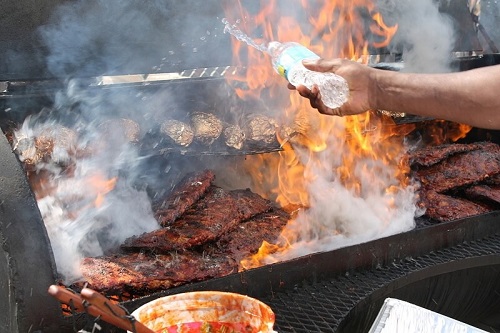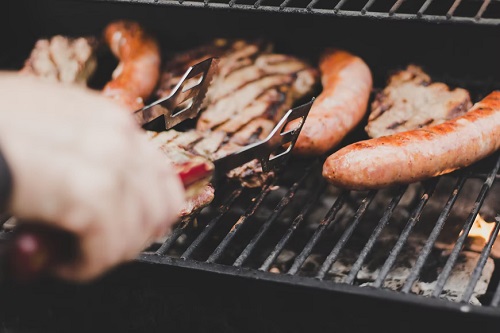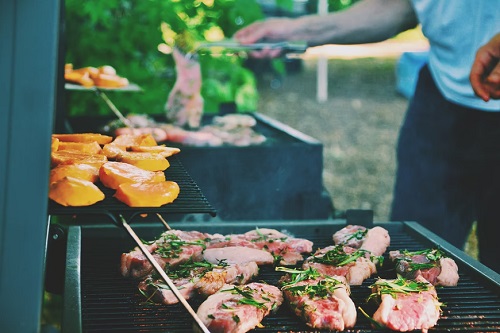
For many people, the word “barbecue” instantly conjures up images of mouth-watering grilled meat, smoky aromas wafting through the air, and lively social gatherings. But did you know that barbecuing is more than just cooking food over fire? It’s a tradition deeply embedded in many cultures around the world, a symbol of camaraderie, and an iconic outdoor activity. Barbecue (often abbreviated as BBQ) is more than a way to prepare food; it’s an event that brings people together, whether at home or in a public park. From smoky ribs to grilled veggies, barbecuing is a celebration of flavor, friendship, and outdoor living.
Although some believe barbecue originated in the Caribbean islands, it has a much broader and global history, with various forms practiced in countries like South Korea, the United States, and Argentina, to name a few. The essence of barbecue lies in the simplicity of cooking with fire, yet it carries an almost ritualistic significance. Let’s dive deeper into why barbecue is more of a home outdoor activity, explore its origins, the nuances of different cooking methods, and the ongoing debates over gas versus charcoal grills.
The Origins of Barbecue: More Than Just the Home Outdoor Activity
While many people believe that barbecue is a Caribbean invention, the truth is more complex. The word “barbecue” may have roots in the Caribbean, specifically in the Taino language, where “barbacoa” referred to a wooden structure used for smoking meats. However, the practice of cooking over an open fire is far more ancient, dating back to early human civilizations. The idea of grilling meat, whether directly over flames or in a smoker, has been adopted and adapted by cultures worldwide.
In the United States, barbecue has become a regional art form, particularly in the Southern states. Memphis, Tennessee, even hosts the prestigious World Championship Barbecue Cooking Contest every May, drawing grill masters from all over the world. Similarly, South Korea has its own beloved style of barbecue, where marinated meats like bulgogi and galbi are grilled over charcoal at the table, often accompanied by a variety of side dishes. Whether it’s slow-smoked ribs or grilled fish, the methods may vary, but the sense of occasion remains the same.

Barbecue: An Outdoor Social Event
Barbecue isn’t just about the food—it’s a social activity. Whether you’re hosting a casual cookout with family or inviting the neighbors over for a backyard feast, barbecuing creates an atmosphere of relaxation and togetherness. The process of grilling outdoors naturally lends itself to socializing. People gather around the grill, chat with the cook, share tips, and often bring their own dishes to contribute to the meal. It’s more than just cooking; it’s about community.
The outdoor setting is another key factor that makes barbecuing special. Unlike indoor cooking, which can feel more isolated, grilling in the open air allows for a communal experience. Guests can enjoy the sunshine, a cold drink, and the enticing aroma of food grilling away, all while participating in conversations and games. Whether you’re cooking meat, fish, vegetables, or even pizza, the outdoor environment enhances the experience, making it feel more festive and engaging.

The Smoke and Flavor Factor: Charcoal, Wood, or Gas?
The main reason barbecue is an outdoor activity is the smoke. Cooking over a flame—whether fueled by wood, charcoal, or gas—produces a significant amount of smoke, which adds flavor but also makes it impractical for indoor cooking. Each fuel source imparts a distinct taste to the food, and this is one of the great appeals of outdoor grilling.
- Charcoal and wood are favored by barbecue purists for the smoky flavor they impart. Wood chips can add a range of flavors depending on the type of wood used, such as mesquite, hickory, or applewood. Charcoal, often used in combination with wood chips, produces that classic barbecue flavor and smell, creating an unmistakable outdoor cooking experience.
- Gas grills, on the other hand, offer convenience and ease of use. They heat up quickly, are easier to control, and don’t leave behind the ash and mess of charcoal. However, they don’t impart the same smoky flavor that you get from burning wood or charcoal. Despite this, gas grills have surged in popularity, especially in urban areas where the mess and cleanup of charcoal can be a hassle.
As a result, there’s an ongoing debate among barbecue enthusiasts: charcoal vs. gas. Purists often argue that only charcoal (or wood) gives you the true barbecue experience, while others swear by the convenience of gas. In the end, it comes down to personal preference, but it’s clear that barbecue in any form is deeply tied to the outdoor environment, where smoke can freely waft away and flavors can mingle with the fresh air.
The Evolution of Barbecue Equipment and Tools
Modern barbecuing has seen a surge in the variety of tools and equipment available, making it easier and safer to enjoy this outdoor activity. Advanced gas grills now come with multiple burners, side burners for preparing sauces, and even rotisserie attachments for slow-cooking meat. For those who prefer traditional charcoal or wood-fired grilling, there are plenty of accessories like chimney starters, thermometers, and even smart grilling tools that allow you to monitor the temperature of your food with an app.
Tongs, heat-resistant gloves, and grill baskets are just a few examples of handy tools that help cooks manage the heat and prevent burns. These innovations make the process of barbecuing less stressful and more enjoyable, allowing even novices to impress their guests with perfectly grilled food. Whether you’re turning burgers or smoking ribs for hours, having the right equipment can transform barbecue from a simple meal into a full-fledged culinary event.

Safety First: Cooking Food Thoroughly
Barbecuing may be fun, but it also comes with responsibilities—especially when it comes to food safety. Undercooked meats are a common hazard at barbecues, potentially leading to foodborne illnesses. It’s important to ensure that all meat is cooked to the appropriate temperature to kill any harmful bacteria. Using a meat thermometer is an easy way to check that your food is safe to eat. For example, chicken should be cooked to an internal temperature of 165°F (74°C), while beef and pork should reach at least 145°F (63°C).
In addition to properly cooking food, it’s essential to practice good hygiene. This means washing your hands before and after handling raw meat, cleaning grilling tools regularly, and ensuring that different types of food are kept separate to avoid cross-contamination. With just a bit of extra care, you can ensure that your barbecue remains an enjoyable—and safe—experience for everyone.
Who Holds the Reins at the Grill?
One interesting cultural aspect of barbecuing is the question of who controls the grill. Traditionally, in many cultures, men have taken the lead in outdoor cooking, especially when fire is involved. According to some psychologists, this may harken back to prehistoric times, when controlling fire was seen as a key survival skill. Today, this tradition often plays out in backyard barbecues, with men stepping up to “tame the fire” while women handle other aspects of the meal. However, this is changing as more women take on the grill master role and claim their space in this outdoor culinary activity.
In the end, barbecue is about more than just who stands at the grill. It’s a shared experience that everyone can participate in, whether they’re flipping burgers or setting the table. The joy of barbecue lies in its ability to bring people together in a relaxed, outdoor setting, where the simple act of cooking food over fire turns into an occasion to remember.
It’s about creating memories and sharing a delicious meal.
Barbecue has evolved into a cultural symbol, a culinary art form, and, most importantly, a cherished outdoor activity. Whether you’re firing up a charcoal grill, enjoying the ease of a gas barbecue, or trying out new tools and techniques, the essence of barbecuing remains the same—it’s about gathering, sharing, and savoring the simple pleasures of life. The smoky aroma, the crackling of fire, and the communal atmosphere make barbecuing a unique experience that combines food, fun, and friendship.
As barbecue technology and techniques evolve, one thing remains clear: the joy of cooking outdoors is timeless. Whether you’re a fan of slow-smoked ribs or prefer quick-grilled veggies, the magic of barbecue lies in its ability to bring people together. So the next time you light up the grill, remember that you’re part of a long-standing tradition that spans cultures and centuries—one that’s all about creating memories, one delicious bite at a time.



